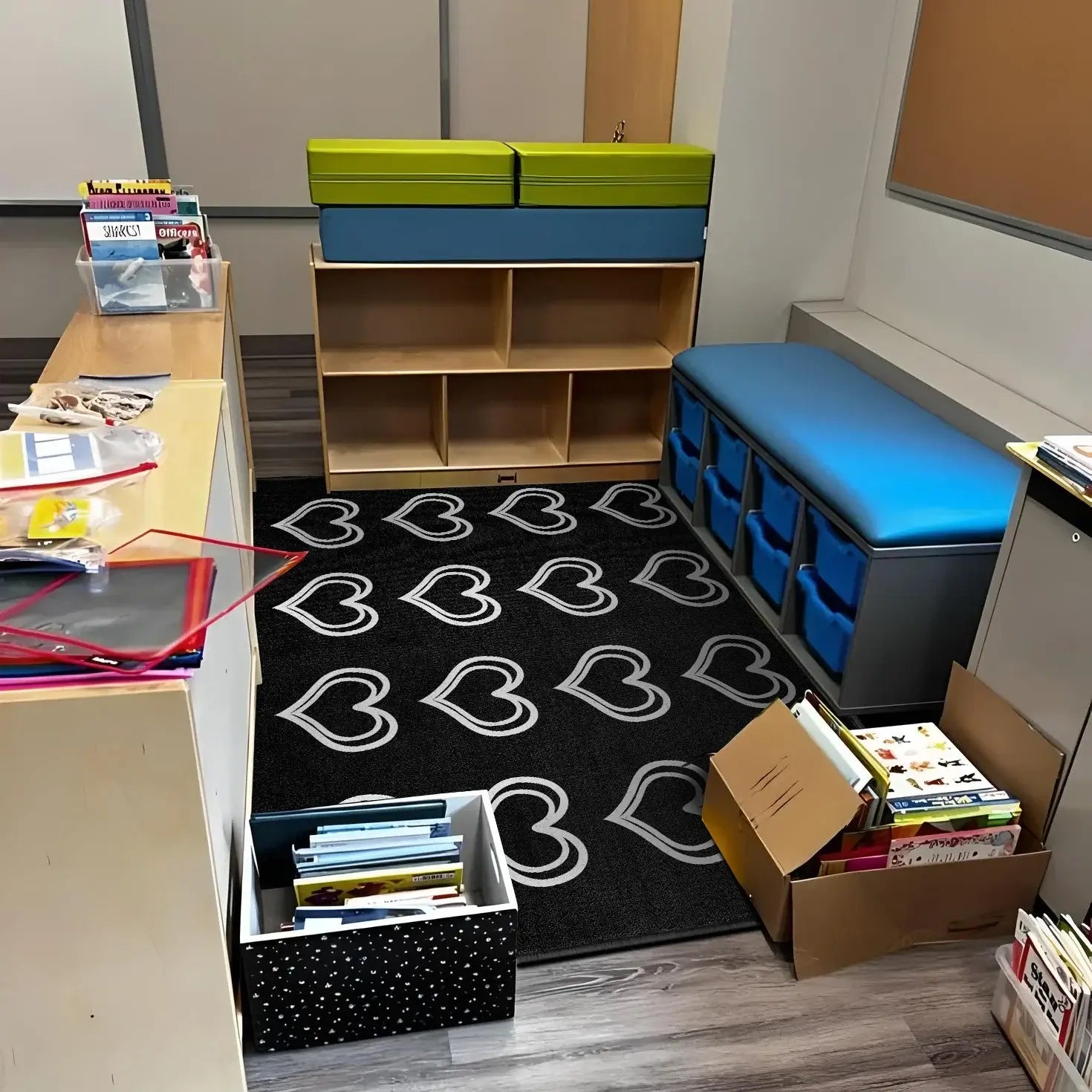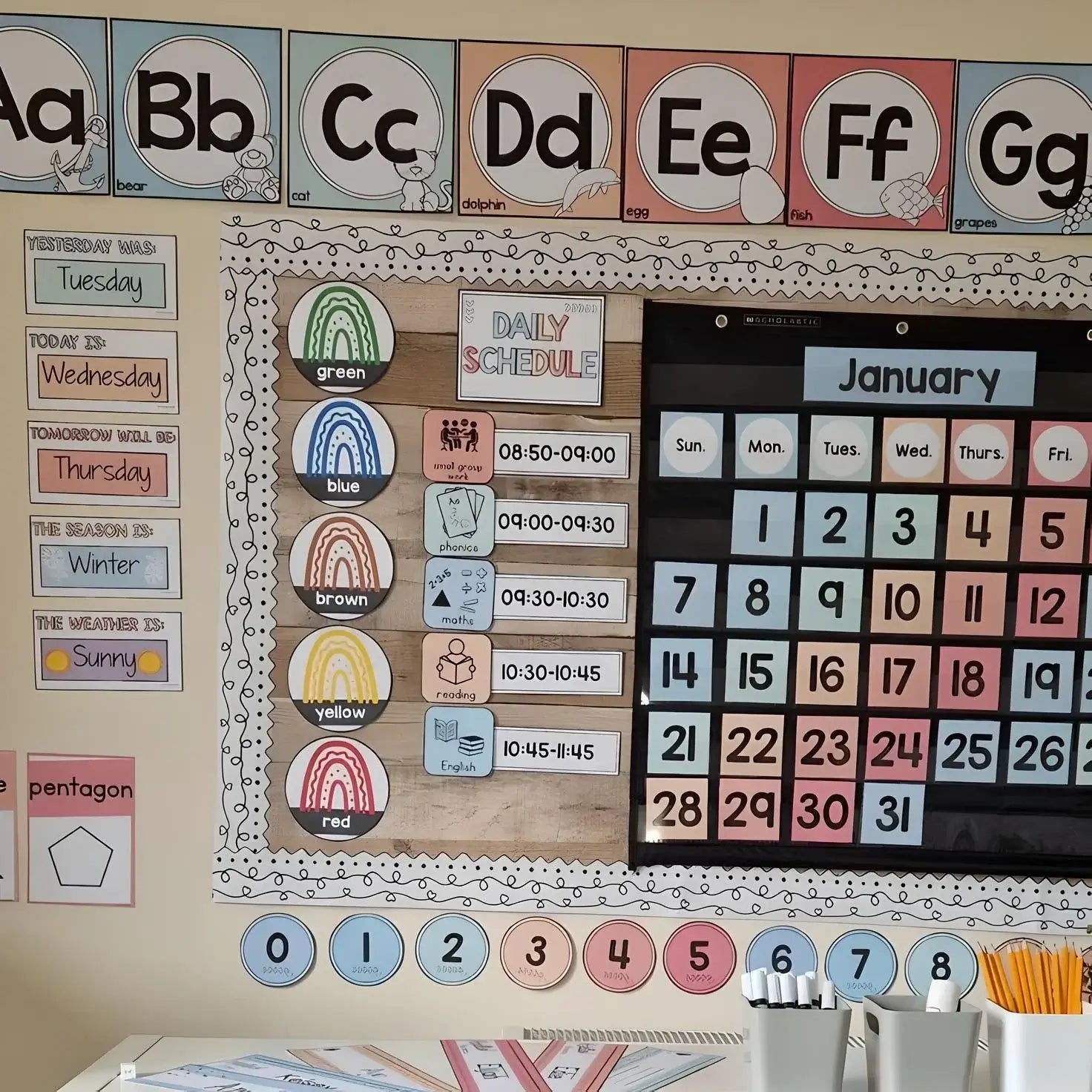Why Classroom Rugs Matter in Today's Learning Environment
Educational research consistently shows that comfortable, well-designed learning spaces directly impact student engagement and academic performance.
Classroom rugs serve multiple purposes: they define learning areas, provide comfortable seating alternatives, reduce noise levels, and create visual boundaries that help students understand classroom expectations.
For students with sensory processing needs, the texture and warmth of classroom rugs offer grounding sensations that promote focus and emotional regulation.
The soft surface provides a calming alternative to hard floors, making circle time, independent reading, and group activities more comfortable for learners of all ages.
Essential Features of Quality Educational Rugs
When selecting classroom rugs, educators should prioritize durability, safety, and educational value. High-quality options feature stain-resistant materials that withstand daily use while maintaining their appearance.
Anti-slip backing ensures student safety during active learning sessions, while easy-clean surfaces simplify maintenance for busy teachers.
Size considerations vary based on classroom layout and intended use. Large area rugs work well for whole-group instruction, while smaller rugs can define individual learning stations or quiet corners.
The ideal classroom rug balances functionality with visual appeal, incorporating colors and patterns that complement rather than overwhelm the learning environment.
Creating Inclusive Learning Zones with Strategic Rug Placement
Thoughtful rug placement transforms classrooms into organized, purposeful learning zones.
A reading rug creates an inviting space for independent exploration, while a central gathering rug facilitates group discussions and morning meetings.
Multiple smaller rugs can define learning centers, helping students transition between activities with clear visual cues.
For students with autism or ADHD, clearly defined spaces reduce anxiety and improve focus.
Sensory-friendly classroom design becomes more achievable when rugs provide tactile boundaries that students can easily recognize and respect.
Maintenance and Longevity: Protecting Your Investment
Quality classroom rugs represent a significant investment in student learning. Proper maintenance extends their lifespan while ensuring a healthy classroom environment.
Regular vacuuming removes daily debris, while periodic deep cleaning eliminates accumulated dirt and allergens.
Many educators find success with washable classroom rugs that can be cleaned in standard washing machines.
For larger rugs, professional cleaning services ensure thorough sanitization without damaging materials. Rotating rugs seasonally allows for deep cleaning while maintaining classroom functionality.
Supporting Different Learning Styles Through Flexible Seating
Today's classrooms accommodate diverse learning preferences through flexible seating arrangements.
Seating rugs provide comfortable floor seating that many students prefer over traditional chairs.
This alternative supports kinesthetic learners who benefit from movement and varied positioning throughout the day.
Research from the University of Rochester demonstrates that flexible seating options, including floor seating on rugs, can improve student attention and academic outcomes.
The informal seating arrangement often encourages more natural peer interactions and collaborative learning.
Choosing Age-Appropriate Designs and Themes
Effective classroom rugs balance educational content with age-appropriate design.
Elementary classrooms benefit from alphabet rugs, number grids, or world maps that reinforce curriculum concepts.
For older students, neutral patterns or solid colors provide sophistication while maintaining the practical benefits of floor covering.
Avoid overly busy patterns that may distract students or compete with other classroom visuals.
The goal is to create a cohesive learning environment where the rug enhances rather than overwhelms the educational experience.
Budget-Friendly Solutions for Every Classroom
Creating sensory-friendly learning spaces doesn't require unlimited budgets. Many affordable classroom rugs offer durability and functionality without premium pricing.
Consider washable cotton rugs for high-traffic areas, or foam puzzle mats that provide cushioning while allowing easy replacement of damaged sections.
Grant opportunities often support classroom environment improvements, making quality rugs more accessible for educators.
Parent-teacher organizations frequently contribute to classroom enhancement projects, recognizing the impact of comfortable learning spaces on student success.
The Science Behind Comfort and Learning
Neuroscience research reveals the connection between physical comfort and cognitive performance.
When students feel physically comfortable, their brains can dedicate more resources to learning rather than managing discomfort or environmental stressors.
Educational neuroscience studies show that comfortable learning environments support better memory formation and retention.
Classroom rugs contribute to this comfort by providing thermal insulation from cold floors, cushioning for extended sitting, and tactile input that many students find calming.
These physical benefits translate directly into improved learning outcomes.
Implementation Strategies for Maximum Impact
Successful classroom rug integration requires thoughtful planning and clear expectations.
Introduce rugs gradually, allowing students to adapt to new seating arrangements and classroom zones.
Establish clear guidelines for rug use, including expectations for care and appropriate behavior.
Consider classroom management techniques that incorporate rug spaces into daily routines.
Many teachers find that round classroom rugs help make rug time a favorite part of the school day, encouraging classroom community and shared routines.
Long-Term Benefits for Student Development
The impact of comfortable, well-designed learning spaces extends beyond immediate academic benefits.
Students who experience positive classroom environments develop stronger school connections and more positive attitudes toward learning. Special education support becomes more effective when environmental modifications address sensory and comfort needs.
Quality classroom rugs represent an investment in student success that pays dividends throughout the academic year.
By creating spaces where all students can learn comfortably, educators build foundations for lifelong learning and academic achievement.
Creating sensory-friendly learning spaces through thoughtful use of classroom rugs demonstrates the powerful connection between environment and education.
When students feel comfortable, supported, and welcomed in their learning spaces, they're free to focus on what matters most: growing, learning, and reaching their full potential.




Leave a comment
This site is protected by hCaptcha and the hCaptcha Privacy Policy and Terms of Service apply.